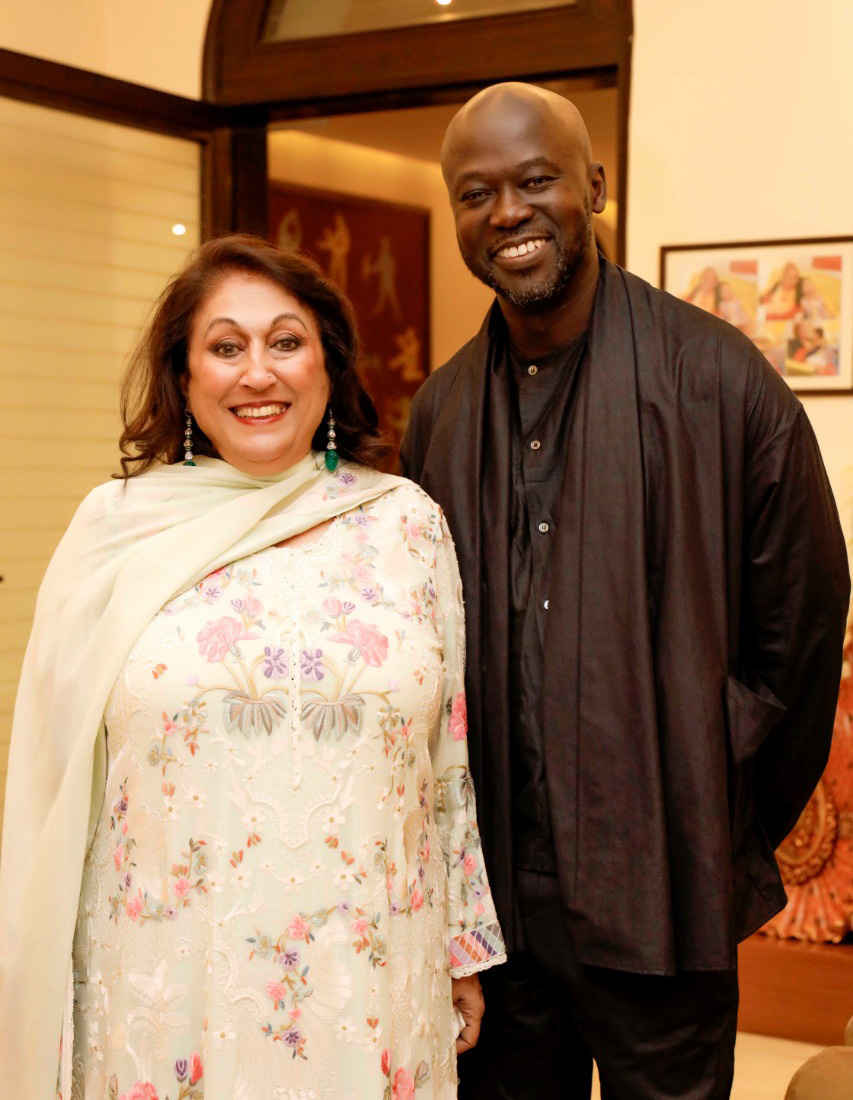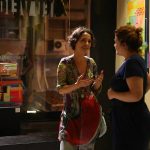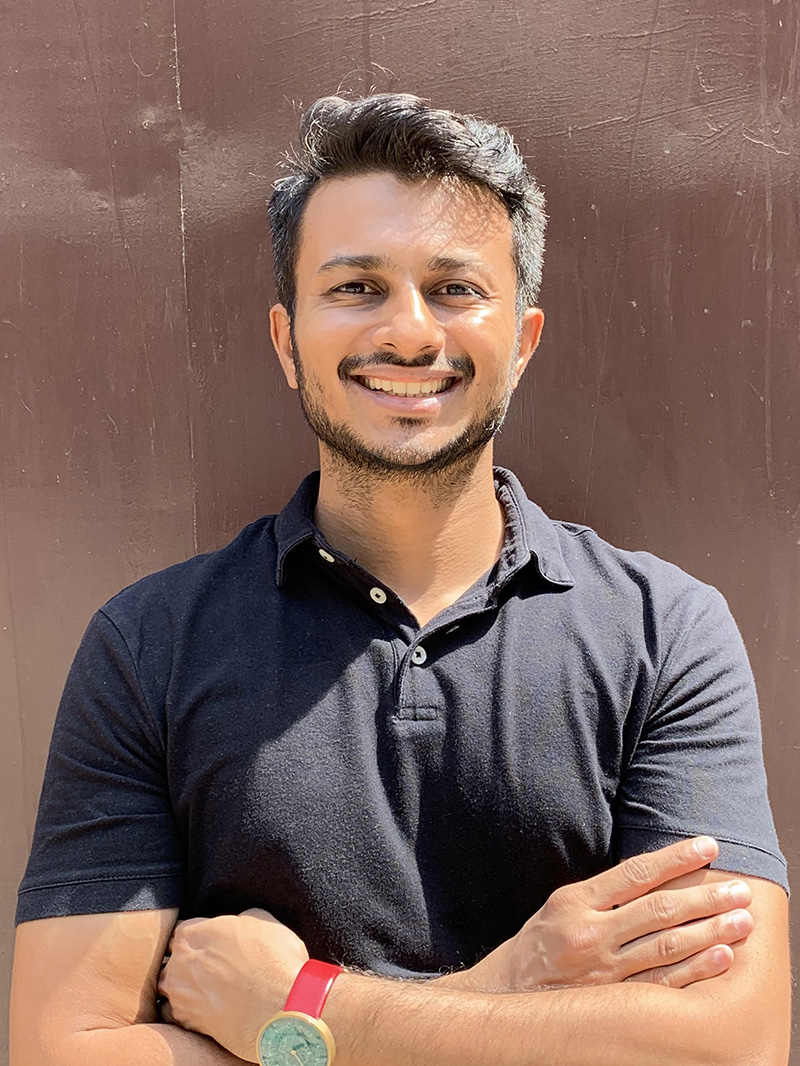Kiran Nadar leads us on a heritage walk down memory lane, spanning the evolution of Indian art over the last 100 years.
I feel India is ready for an architectural masterpiece in the form of a museum, for which we had just selected land in Delhi and finalised Ghanaian-British architect Sir David Adjaye. The plans were drawn and things were in the final stages when the nationwide lockdown was announced to halt the spread of the Coronavirus.
As social distancing engulfs the world, physically isolated, we are now ironically, more connected than ever, hanging on every news update from the Covid precipice. On the 10th anniversary of KNMA, Kiran Nadar leads us on a heritage walk down memory lane, spanning the evolution of Indian art over the last 100 years.
It’s apparent Kiran has had a finger on the pulse of Indian art before it went mainstream, as she deftly flicks through a list of the greatest Indian talent, dwelling on artists’ styles and subjects of choice, moving seamlessly from one era to the next. As art transitions into the new digital realm of the future, she shares her plans on what could be the biggest endowment to the world of art and architecture, in an interview with Sonalee Tomar
Featured Image: Kiran Nadar portrait. Image courtesy KNMA.

Founder and Chairperson of KNMA, Kiran Nadar with Ghanaian-British architect Sir David Adjaye, who is responsible for designing the upcoming new museum in New Delhi. Image courtesy KNMA.
How are you? And how are you spending your time these days?
KN: What such an event (Coronavirus pandemic) reminds us of is what is truly important in life, and what is truly important to me is close by. My grandchildren live one home down from mine, I’m grateful for the proximity of family during these unprecedented times. It is important that everyone find something to engage with, to stay grounded during these uncertain times.

16 Haripura Congress panels by Nandalal Bose. Tempera on paper. 1937. Collection: National Gallery of Modern Art, New Delhi
How has the current crisis changed things at work at KNMA? What were you doing when the world came to a standstill last week?
KN: We have been working on actualising a new museum, which I had conceptualised two years ago. The plans were drawn up and work was underway.
I feel India is ready for an architectural masterpiece in the form of a museum, for which we had just finalised the architect and selected land in Delhi. It was in the final stages when the 21-day nationwide lockdown was announced to halt the spread of the coronavirus.
Ghanaian-British architect, Sir David Adjaye, who lives between Ghana and USA, had finished the drawings and the plans. He was to come and stay in India in June and July to start construction, but now the work is on hold indefinitely. I foresee a delay of months, not more, due to these novel circumstances.
These are unprecedented times. Of course, we will move forward in the future, as and when the lockdown is lifted and life goes back to normal, and we can.
As I consider the model and plan that the architect has designed and given us for this new museum, I have something powerful to usher in another milestone for Indian art on the world stage.

(L-R) Ashim Purkayastha, Atul Dodiya, Shakuntala Kulkarni, GR Iranna and Jitish Kallat. Artists at India Pavilion. Image courtesy KNMA.
What is the KNMA team up to? Has your programming been affected?
KN: We are all well organised to work remotely from our residences. We are offering virtual tours of a lot of our past shows and permanent collection, working on doing social media outreach and designing courses and online workshops for all ages.

Artwork by GR Iranna. NAAVU (We Together). 2012.
You have a deep understanding of art and artists in flow. How do you feel the art world would respond to stress in times like this crisis?
KN: I’m sure artists are spending a lot of time doing a lot of work, because they are also bound to their residences. I don’t know what will emerge from this potentially moving, en masse collective creative response to the current crisis. The art world is flexible and herein is our strength during these trying times.

Untitled by Manjit Bawa. Collection and courtesy: KNMA.
Speaking of periods, shall we go back to the beginning and visit your first tryst with art? How did your journey begin?
KN: The first pieces in my collection were from the holy trifecta of Indian talent at the time – M F Husain, Rameshwar Broota, and Manjit Bawa. Being engaged with many so artists and makers of the time, I ended up collecting more work than could be hung at home or the (HCL) office. So as an effect, rather than a cause unto itself, the museum was conceived, in a dash of serendipity or kismet. That’s how the journey started. I never imagined that a collection curated basis my personal interest and tastes would evolve into a public museum. It all happened organically.

(L – R) Roobina Karode, Shiv Nadar, Ustad Shujaat Husain Khan and Kiran Nadar at Kiran Nadar Museum of Art, Saket. Image courtesy KNMA.
How has this journey with art changed you?
KN: It has definitely had an impact. I wouldn’t say art has changed me, but I’ve definitely evolved from it. It has sharpened and widened my horizons and I’ve become more perceptive. I don’t really have an arts background, so its been a huge learning experience. And, I further worked on sharing my experiences with the public to use what I have learnt via art. So there was an after-effect as well.
Ten years is quite a long time. One doesn’t notice it all at once, as the pace of time is languid. I have a very good team. It’s a small team but most members have been with me right from the start and looking back we have certainly come a long way, and that’s been good for the museum. It has been an amazing journey so far.

Zameen by M.F Hussain at the Venice Biennale. Image courtesy KNMA.
What according to you was the most formative period for Indian art?
KN: Well, Indian art goes back many many centuries. The landscape of Indian art is old as time itself – relief, sculpture and miniature painting evolved and existed alongside the very first development of human societies in the subcontinent. Art is as primordial as the human condition, so to be clear, we are really talking about contemporary Indian art here. This encompasses different movements that have been key milestones from the end of the 19th and beginning of the 20th century, so just over a hundred years.
Let’s start with Ravi Varma who, perhaps unintentionally, essayed the cultural diversity of India by his depictions of the common man as well as portraits of royalty. He took inspiration from the renaissance painters and developed a realistic style, he did a lot of mythological art in the form of paintings of gods and goddesses and miniatures, along with his portraiture of subjects from diverse classes – a telling documentation of the stratified society at the time, made clear by ornaments and attires of his subjects.
Then there was the Bengal School, then from there, we go to the writers and masters of the Tagore school.
They didn’t have large canvasses. Their works were small in size and they worked with a completely different depth of perception from when you look at the works made by the Bombay school, which started around the time of Independence in 1947. The Progressive Artists’ Group (PAG) was a group of modern artists, formed by six founder members, F. N. Souza, S. H. Raza, M. F. Husain, K. H. Ara, H. A. Gade, and S. K. Bakre, who was the only sculptor in the group.
The most important period for Indian art is the Progressive Art Movement. Post-Independence was a pivotal moment. It was a key movement that then grew to encompass many, many major artists like Ram Kumar, Tyeb Mehta and Krishen Khanna. All these artists were not really part of the Progressive Artists Group but got linked with them because they followed the same kind of interest in art.
A lot of these people moved abroad, but someone like Husain did not. He stayed in India and so that’s the most important period as far as I think.
Then there are post-modern artists like Broota. Of course, there are many women artists, like Amrita Sher-Gil. So art has evolved over a century in different ways. Now what is happening is that are the contemporary artists, the prominent ones being Anju Dodiya, Atul Dodiya, Neelima Sheikh and Nalini Malani.

Self Portrait with Easel by Amrita Sher- Gil. 1930. Collection and image courtesy: KNMA.
Who are your maestros? Any artist who deserves a special mention?
KN: There is one particular artist that comes to mind, and that is Hungarian-Indian painter Amrita Sher-Gil (b 1913), who passed away at the young age of 28.
She would have been 108 today. She was a class of her own. She was an individual artist who was a phenomenon and wasn’t a part of any group as such. She really was one of the most progressive individuals of her time, in terms of her world-view and practice. A pioneer of blending eastern and western influences, specially as a young woman at that time, in the context of challenging people’s perspectives via her work and art.

Kiran Nadar with artwork by Ashim Purkayastha. Image courtesy KNMA.
You have seen the art world evolve quite a bit. Could you share some observations about the changing landscape?
KN: There was no digital art 10 years ago, while today audiences are opening up to the possibility of new mediums like location independent participatory exhibitions and virtual biennales that render geographies and boundaries obsolete.
There are now artists who work exclusively in new media. These relatively new and unknown forms of art are different from anything that existed before. One can’t say how popular they will be and how soon, we don’t know what these will evolve into, and which ones will prevail.
One cannot be certain of how this will impact the cultural landscape, but it will definitely lead to a newer terrain!
Art is always evolving, much like the rest of the world. Perhaps the art world is best positioned to be agile, and colour outside the lines. Could be that this is the industry that can most easily embrace the unknown, overcoming all constraints and outlines.
Our conventional understanding of art is being expanded and turned on its head. The process of display, ownership and sharing of art are unlike what we are used to dealing with, in traditional paintings and sculpture. Also, the new formats are mainly acquired by public spaces like museums, events and commercial complexes to hold scale. Not just the newer digital art, but a lot of conventional large-scale works too cannot fit into private spaces.
The constraints of the new mediums are spatial and practical or perhaps just a matter of sentiment. Openness, change in the behaviour of buyers and collectors will certainly follow. How soon the newer mediums and forms of art are going to be accepted in India is yet to be seen.
To authentically experience the artist’s concept and imagination, one may need a certain amount of space and technical infrastructure. So far my observation is that only those spaces that are capable of showing the work in a way that transfers the vision of the artist, do justice to the newer mediums.
For example, take the case of Bhupin Talika. His works are beautiful but so massive that it is impossible to fit them into private spaces designed for personal use. Personally for me it is quite interesting to watch video art, if the space is large enough to show what the artist is trying to say. The experience can be quite moving and epoch-making if the scale has been maintained and the artist’s vision has translated well.

(L-R) Roshni Nadar, Shiv Nadar, Roobina Karode and Kiran Nadar. At Kiran Nadar Museum of Art, Noida. Image courtesy KNMA.
What is the team working on now? What can we look forward to?
KN: We swiftly shifted focus from physical events to the online arena. KNMA as a dynamic organisation, aims to bring the gallery as a cultural platform into people’s homes. So starting with the jewels from our archive, we connected the audience to our existing display in the form of virtual exhibitions of our permanent collection.
It has been proved time and again how beneficial arts and culture is to mental health so we are also running programs across all platforms to keep arts alive in people’s homes, we want to inspire and encourage all ages to take part, at home and develop their own creative practice.
As told to Sonalee Tomar for the Asian Curator.
Kiran Nadar Museum of Art
The KNMA is a milestone towards manifesting a long-term vision that began with a private collection handpicked by Kiran Nadar. A multi-faceted initiative that encourages art appreciation in schools and promotes art in public spheres by actively collaborating with artists.
With about 18,000 and 13,000sq ft of exhibition space in the New Delhi and Noida locations respectively, KNMA is home to some of the finest modern contemporary art. Its core collection comprising post-independence 20th century painters, KNMA also holds exhibits of emerging artists.
Before you go – you might like to browse the Asian Curator curatorial archives . Contemporary art curators and international gallerists define their curatorial policies and share stories and insights about the inner runnings of the contemporary art world.












Add Comment